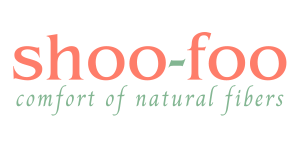Eco Sustainable & Healthy
In a world where all kind of chemicals are flooding into our lives, invading even the most intimate spheres of our homes, and affecting our health, we want to be part of the solution and propose healthier options.
By making and offering bath and bed linens made from natural fibers such as organically grown bamboo, hemp, flax, kapok and wool, we are able to offer an alternative to the highly polluting regular cotton industry and to the petroleum aka plastic based fabric which are polyester, microfiber and the likes.
Our mission is to create and offer healthy eco sustainable bath and bed linens made from organically grown bamboo and other natural fibers to help reduce toxins in the environment and make our homes safe and comfy.
Bamboo
The bamboo plant requires no fertilizer, irrigation or pesticides to grow strong and it doesn’t need to be replanted. Bamboo do regenerate by itself. In consequence, not only we don’t cut forests to plant bamboo, but we contribute at keeping forest alive.
Bamboo is a fast growing crop that needs only rainfall and sunlight to grow. And it grows fast! It has been recorded to grow up to a meter in one day. This makes bamboo a highly renewable resource.
Furthermore, the ecology of bamboo forests improves soil quality, reduce the amount of carbon dioxide in the air and do produce large volume of oxygen for us to breathe; all that while preventing soil erosion.
All these characteristics allow bamboo to be listed as a true renewable and sustainable resource, especially when forests are grown and managed sustainably.
All bamboo crops we are using at Shoo-Foo come from forests certified organic by the Organic Crop Improvement Association (OCIA) and the USDA & Ecocert seals and sustainable by the FSC Chain of Custody certification.
FAIR TRADE
Shoo-Foo manufacturing partners are hand selected based on safety of workers, environmental and ethical factors, trust and commitment to quality control.
We have been working with the same few production partners for more than 10 years now, more precisely since 2007. We know each other personally very well and it is always a pleasure for me to visit our manufacture teams in person once or twice a year.
All of them hold the certification ISO 9001 for their management system.
HEALTHY LIVING
For reasons related to the biology of the plant, bamboo fabric is more resistant to mildew and bacteria than most other types of fabric. Bamboo fabric don’t kill mildew and germs, it makes their development more difficult. The result is bamboo towels and wash cloths that stay fresher longer than most other fabric. Say farewell to “bad smelling” washcloth after one or two uses! Note that hemp fabric has the same fresh quality.
Since our skin breathes and absorbs a high percentage of the substances crossing its path, choosing bath linens made from organic fibers that are germs-resistant could be part of a healthy self care ritual.
All our products are certified Oeko Tex Standard 100 which means that the products are ecologically harmless for human health, even for babies.
BETTER MATERIAL

The qualities of bamboo fabric are remarkable. The smooth material made from the cellulose of bamboo is extremely soft, highly absorbent (4 times more than cotton), moisture-wicking, breathable and, it is biodegradable. As versatile as cotton, it can be woven into breathable and light fabrics for baby items or bed sheets and also can also be used to make thick and luxurious bathrobes and spa towels.
Being soft, incredibly absorbent, breathable and resistant to germs, textiles made from bamboo cellulose make it a perfect material for bath towels and bed linens.

Bamboo manufacturing is not a new trade. The fast growing bamboo plant has been used for centuries. What can you NOT make out of bamboo? Well, up to the mid-2000's, you could only use bamboo for food, furniture, crafts, paper, building, medicine, music and even for producing oxygen and improving soil nitrogen (as if that wasn’t enough). But then the Chinese figured out that the same process of making bamboo paper (a Chinese invention) could be taken a step further to make bamboo fabric.
And so, the bamboo textile craze was on.
How does it happen?

With the Shoo-Foo bamboo manufacturing process, bamboo is cut by local village people who have been doing this for centuries. Actually, bamboo is like grass, and cutting it properly (yes, it’s a skill!), helps keep the bamboo forest alive. Farmers pile harvest on the side of the road where it will be picked up by the factory workers.
Then, under the effect of a steam system, stems and leaves are isolated and broken into a pulp called “cellulose”. Cellulose is the form of bamboo that can be spun unto thread and then woven into fabrics of all types.

The process of breaking down bamboo into a fibre suitable for making fabric does use N-Methylmorpholine N-oxide (NMMO), which is an organic solvent used since the '90s for converting raw wood fiber into useful textiles. NMMO preserves the natural characteristics of the bamboo cellulose without the use of toxic chemicals.
This organic solvent is relatively easy to be filtered and re-used. The resulting liquid is contained in a “closed-loop” solvent spinning system and recycled at 99.5% to make more bamboo cellulose instead of being leaked into waterways.This is probably the most environmental way of making bamboo fabric, as it also saves both energy and water.
Once the bamboo yarns are made and ready for spinning into threads, bamboo does not require much in the way of scouring, bleaching, shaping or cleaning. In fact, most chemicals and steps used in the cotton process would damage the bamboo yarn anyway.
There is a way to make bamboo using machines and no chemicals, but that process is so costly and so labour intensive, there is hardly anyone using that technology today. But the good news is that technology progresses, and the bamboo manufacturing process is constantly improving.
Hemp
Hemp is another sustainable alternative to synthetic fabric. Similar to bamboo, hemp requires far less water and land to grow compared to cotton, while producing three times the fiber per acre. It thrives without pesticides, herbicides, or synthetic fertilizers, making it kinder to both the environment and your skin.
But hemp’s benefits go even deeper—literally! Its roots restore and detoxify the soil, absorbing heavy metals and carbon dioxide while enriching the earth with nutrients. This prevents soil pollution and keeps our land healthier for longer periods of time.
When transformed into textiles, hemp offers a smooth, breathable fabric that feels like an elevated version of linen—soft, durable, and designed to get better with time. In fact, repeated washes only make it softer, ensuring your favorite hemp bed sheets or towels will stand the test of time.
Cotton and Microfiber production
Before being used in the fabrication of a product cotton, both ‘regular’ and organic, requires several more steps before the thread is ready to be knitted or woven. They first need to be cleaned, sized, softened, bleached, strengthen, smoothed. From cleaning agents to get rid of sticks, ginning machines to remove seeds, oxidizers to bleach away yellow-ness and gas flames to smooth out surface fibers, the process is hefty and much more harsh on the planet in terms of byproduct when compared to bamboo.
What is Lyocell?
The production of lyocell is similar to the process of making bamboo fabric, only it uses wood pulp from hardwood (oak, birch, eucalyptus, among others) as its source instead of bamboo.
Many people refer to the closed-loop process describe above as the “lyocell process“; referring to the technique which produce cellulose fibres from dissolved pulp using a close-loop dry jet-wet spinning process. Lyocell is traditionally made from hardwood logs or chips (often birch or oak) and more recently from eucalyptus, while bamboo is made, well, from bamboo!
Is bamboo manufacturing really a “green” process?

Truth be told, the production of bamboo is one of the most eco-sustainable when compared to the steps involved in the growth, use of resources and manufacturing of other fabrics.
During growth, bamboo has zero impact on the planet. It is a plant that grows naturally with just rain and sun – no land reclaiming, no irrigation and no replanting necessary (bamboo can grow to full maturity within 3 to 4 years, all on it’s own). The plant itself is a natural deterrent to pests, so it requires no pesticides or insecticides. The forests are managed by local communities and harvesting is done without chemicals and without large machinery – it is all mechanical, as it has been done for centuries.
Organic and Eco sustainable

We are proud to say that the bamboo fibres we used for our products have obtained the FSC Chain of Custody Certification – meaning that from the bamboo forest to the fibres, all successive stages of production meet the criteria and rules requested to assure a responsible stewardship of the world’s forests.
We are also proud of using only bamboo crops that are certified organic by the Organic Crop Improvement Association (OCIA), the United States Department of Agriculture (USDA) and Ecocert seals; and healthy by Oeko-Tex Confidence in Textiles.
Why make bamboo textiles in China?
First, the know-how of producing bamboo fabrics has been developed in China and we believe that the best quality in this category of products still comes from China.
Second, the natural resources used to make our products is located in China (up to now, no other countries in the World produce yarns made from cellulose of bamboo). In order to keep our supply chain short and eco-efficient, we’ve decided to handle all the transformation process in China.




